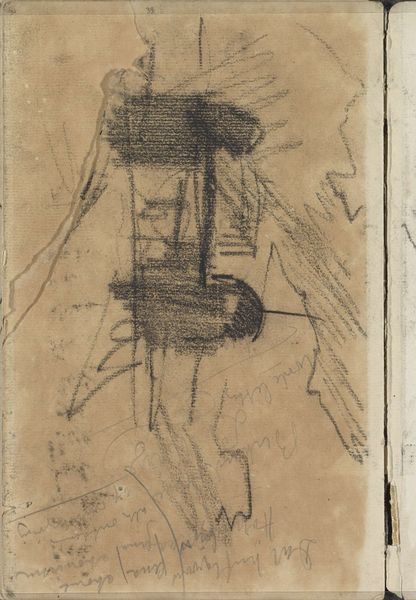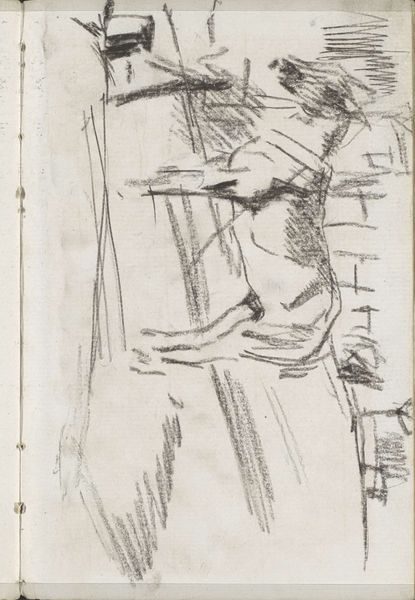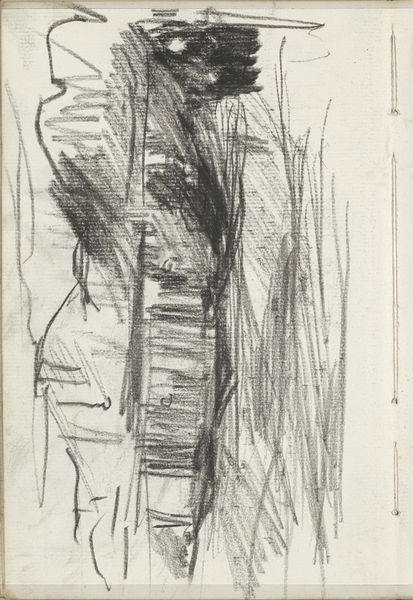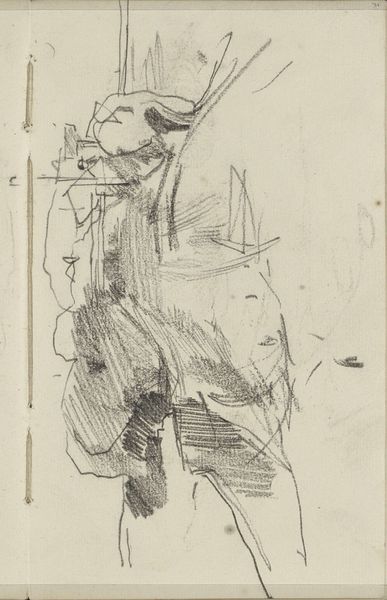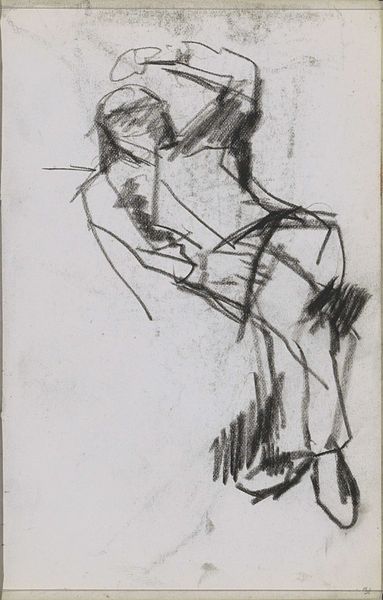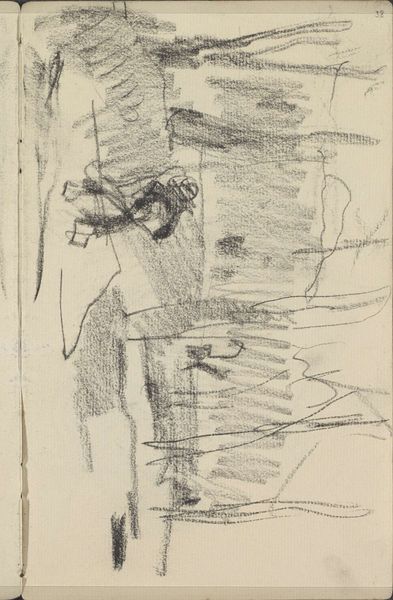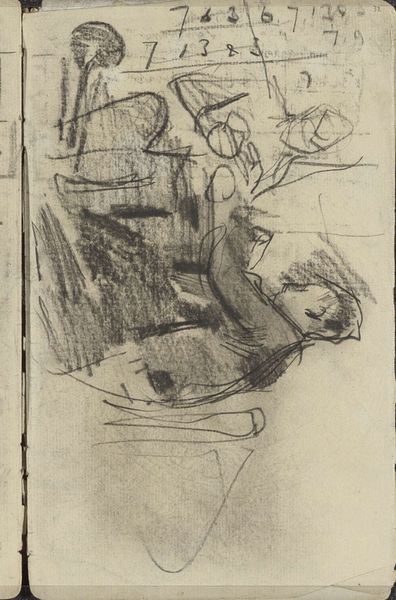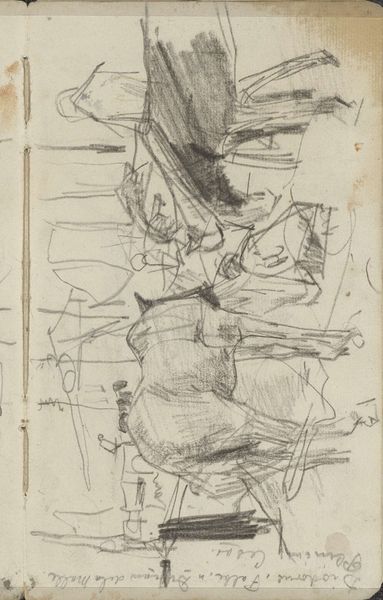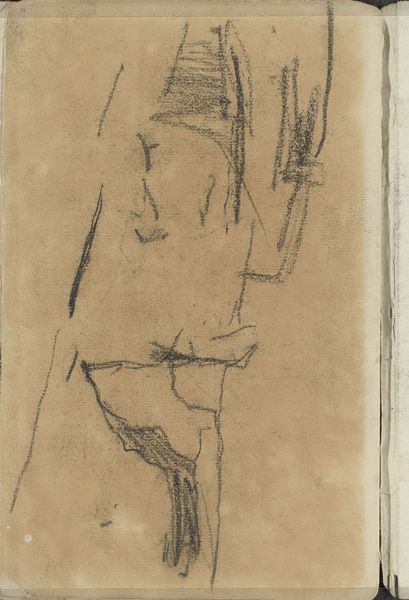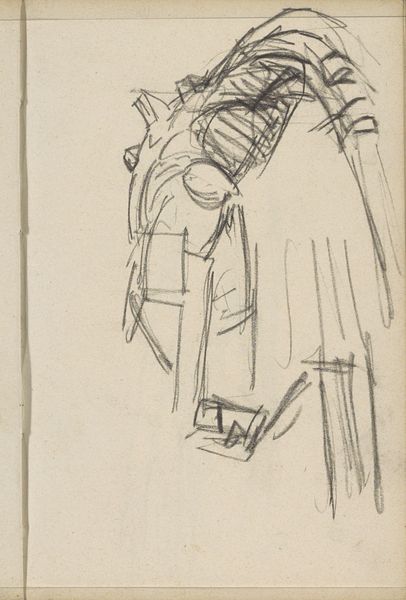
Copyright: Rijks Museum: Open Domain
Curator: Well, here's an intriguing charcoal drawing on paper by George Hendrik Breitner. The title, "Bukkende figuren, mogelijk arbeiders"—"Bending Figures, Possibly Workers"— gives us a clue to its subject. It's dated somewhere between 1886 and 1923 and resides right here at the Rijksmuseum. Editor: My first impression? A whirlwind of darkness. It’s all very gestural and shadowy. I sense labor, yes, but also a weightiness, a struggle captured in charcoal. Curator: Precisely! Breitner had this incredible knack for capturing movement and atmosphere with just a few lines. It almost feels like he sketched this while standing right there in the thick of it, catching a fleeting moment of working-class life. The ambiguity—the "possibly workers"—is what gives it that extra layer of intrigue, don’t you think? It leaves room for our own interpretations. Editor: I do, and that uncertainty invites us to ponder their reality. The bent figures, are they exhausted? Oppressed? It sparks thoughts about labor conditions, social hierarchy… were these individuals exploited or celebrated? It evokes a history of class struggle and the depiction of workers in art. Curator: Exactly. It also feels so inherently Impressionistic with its emphasis on capturing fleeting moments and the everyday life of the city. The loose lines, the play of light and shadow… it’s less about exact representation and more about conveying the feeling of being there. I can almost hear the sounds of the city, the clatter and clang. Editor: And perhaps, feel their ache too. Charcoal allows for a particularly tactile translation of emotion—you can feel the pressure the artist applied. There is a raw emotionality to this. Breitner doesn't idealize labor; instead, he lays bare the potential for its dehumanization. Curator: I think that's why Breitner continues to fascinate. He was willing to show the grit and grime, and that commitment to realism – however Impressionistically rendered – is quite potent. It’s an immediacy that pulls us in and makes us contemplate what it truly means to be working, surviving in a city, just trying to carve out a life. Editor: In just a few strokes, this sketch encapsulates the silent struggles of an entire class—perhaps even those whose stories often remain unseen and unacknowledged in art history. Makes you reflect on whose stories get told, doesn’t it? Curator: Absolutely. It's a whisper of history in charcoal. Editor: Indeed, a charcoal testament.
Comments
No comments
Be the first to comment and join the conversation on the ultimate creative platform.

